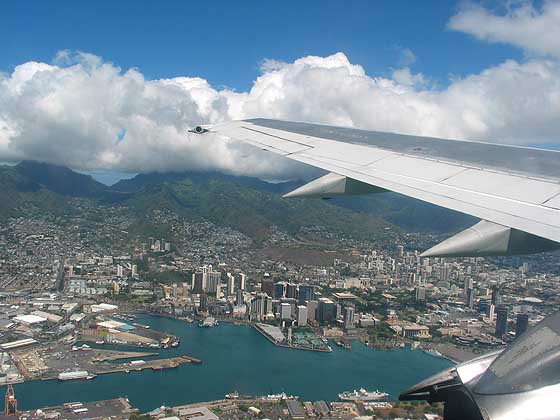North Shore Sustainable Communities Plan sets ‘country’ guidelines, leaves room for some development
HALEIWA—The overarching goal of the North Shore Sustainable Communities Plan is to keep the region’s population—1.7 percent of the Oahu’s total—consistent through the year 2025. For any of you late scramblers who’d like to comment on the plan, before the State Land Use Commission decides whether or not to hand it over to the Honolulu City Council for adoption, the deadline is this Friday.
The gist of the plan calls for maintaining North Shore’s rural character, agricultural lands, open space, natural environment, recreational resources, and scenic beauty.
The North Shore Susainable Communities Plan area extends from Kaena Point in the west to Waialee Gulch near Kawela Bay in the east. Oahu’s shoreline defines the northern edge, while Helemano and the slopes of the Waianae and Koolau Mountain Ranges define the southern edge.
While laying the framework for keeping the general “country” feel of the area, the plan allows for future development—as long as it is primarily within the Community Growth Boundary. Created in 2000, the boundary hugs the areas close to the Waialua and Haleiwa towns as well as built-up establishments close to the coast.
The plan also acknowledges a need for more visitor accommodations and is open to solutions in countering illegal vacation rentals in the area. Something like the controversial planned replica of the historic Haleiwa Hotel at Haleiwa Beach Park might fit into the scope of the plan, as it is now, if the structure maintains a historic look and “fits in” with the rural features of the North Shore, for example.

Illegal vacation rentals in residential areas are noted in the plan as a concern because they bring crowds, noise, and parking issues. The illegal rentals also decrease the number of available housing units for residents while jacking up the rates for the rest of the existing rental market.
Illegal rentals considered and accounted for, there is still an existing need for more residential housing. Therefore, the plan says building can commence within the Community Growth Boundary through the development of either “infill” or adjacent vacant lands. The Waialua Town Master Plan (2005) calls for the most significant build-up on former plantation fields surrounding the town, which are earmarked for 400 to 500 new homes on the site.
Under the North Shore Susainable Communities Plan, the Haleiwa and Waialua “country towns” will remain the centers of commerce. Large commercial “big box” retailers are prohibited from setting up shop because they go against the rural character of the area.
With the closing of its sugar mill in 1996, Waialua has room for the growth of diversified “quiet” industries such as cold storage, clothing manufacturing, and even computer and software development.
As it is now, agricultural lands make up 45,000 acres, or 60 percent of the North Shore’s total area. In keeping with the community’s desire to uphold its rural character, maintain its connection with the land, and build greater food security, the plan’s directive is to protect and preserve all agricultural lands “regardless of current crop production capabilities.”
The plan says tax incentives should be provided to help keep farmers afloat and that “fake” farms and ranching should be watched for and prohibited. Agricultural-based tourism is encouraged.
Beyond these major themes of keeping North Shore agricultural and scenic, there are many more issues addressed within the Sustainable Communities Plan, including the State Department of Transportation’s “Bike Plan Hawaii,” which will eventually establish bicycle pathways for not only the region but also the rest of the island. This goes hand-in-hand with finding ways to alleviate traffic along the two-lane Kamehameha Highway (the plan opposes adding more lanes). Other issues include: the shortage of community parks, the need for better shoreline access, preserving natural resources and historic sites, and addressing the technical issues concerning infrastructure. It should all be there. And if it’s not, say something about it.
For those who might be overwhelmed by the 175-page plan, check out the overview here. It summarizes the City Planning Department’s methodology in preparing the report and highlights the proposed revisions to the current North Shore Sustainable Communities Plan, which was last adopted in 2000.
Click here to read the North Shore Sustainable Communities Plan. To view all Sustainable Communities Plans, go to http://www.honoluludpp.org/planning/dpmap.pdf and click on the map.
There are a number of ways to submit a comment on any of the Sustainable Communities Plans (always include your name and address or contact info).
* Send a a letter to:
Department of Permitting and Planning
7th floor, 650 S. King St.
Honolulu, HI 96813
* Fax (808) 768-6743
* Email [email protected]
For more information, call the Department of Permitting and Planning at (808) 768-8007 or visit http://www.honoluludpp.org.
